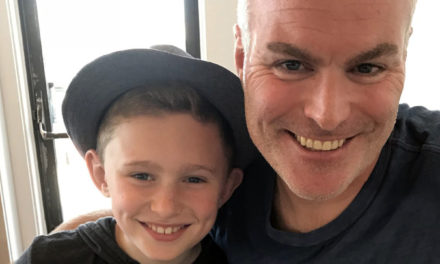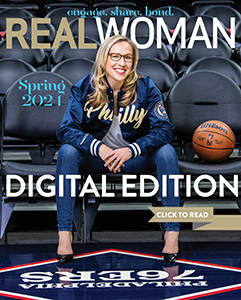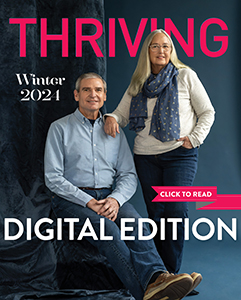Despite her degrees in elementary education and school counseling, Katie Robbins makes pasta sauce for a living. Not only does she make it, but she also distributes, markets, and serves up samples for customers. Since her first love has always been cooking, the 29-year-old from Southhampton, Pa., wouldn’t have it any other way.
Three years ago, after struggling to land a job as a school counselor, she decided to follow her heart and start her own business. “My pasta sauce had always been something my family and friends begged me to make, so I brought it to a farmers market to see if it would sell.” Soon she developed such a following that she called Whole Foods to see about getting her signature sauce into local grocery stores.
“I showed up to my Whole Foods meeting carrying tupperware containers of my sauce,” says Robbins. “I didn’t have packaging, nutritional information, shelf life, or anything, but I had a vision, and I knew my product could speak for itself.” Within 30 minutes of walking out of the meeting, Whole Foods called to close the deal, she says. The healthy-food-focused grocery chain put Robbins and her company, Taste of Tuscany, in touch with firms that helped her figure out how to package her pasta sauce and get it certified. “I ended up going with a stand-up pouch because it was freezer-safe, BPA-free, and recyclable,” says Robbins. “It also helps the sauce stand out from the competition.”
She originally created the sauce for her father as a way to get him to eat healthier, making it with locally grown zucchini, yellow squash, mushrooms, onions, and very little sodium. Her company doesn’t use any preservatives and prepares each batch to order. After landing in her first store 5 months ago, Robbins says her vegetarian sauce is now in more than 15 area supermarkets, including Wegman’s, Acme, McCaffrey’s, and Shop-N-Bag. Her distinctive pasta sauce pouches can be found in the refrigerated section.
Robbins says she was willing to spend a lot on the packaging because she believed it would help the sauce sell. However, she wasn’t willing to go into debt buying a commercial kitchen to produce the sauce until the profits justified the investment. “Instead, I got my parent’s kitchen certified because that way there wouldn’t be any overhead,” she says. “I would rather be busting at the seams than make a move too soon.” Although she’s been approached by investors, she turned them down because she’d rather stay focused on growing this brand on her own. “Too many hands in the pot will make things difficult,” she says. “I’m not at total capacity yet, but I know it’s right around the corner. And I don’t want to borrow money if I don’t have to.”
Robbins isn’t the only woman taking the do-it-yourself route to success. According to Census Bureau data released in August, the number of women-owned businesses in the United States is on the rise, growing by 2 percent between 2007 and 2012. The same data showed women-owned firms made up 36 percent of the business community in this country as of 2012, up from 29 percent in 2007. “It’s inspiring to see anyone take the risk required to fulfill a need in the market,” says Elizabeth A. Vazquez, CEO and co-founder of WeConnect International. “And so many women launch these businesses on top of their full-time jobs because they need to make sure they have a steady income for themselves and their families.”
WeConnect International is a Washington, DC-based non-profit that connects more than 5,000 women entrepreneurs from more than 90 countries with with potential corporate buyers of their products. “We educate women in business on access to markets and help them get certified in corporate supplier programs,” says Vazquez. “We also help them understand what it takes to be industry relevant and meet industry standards.”
However, despite the growth, Vazquez says the largest corporations don’t do more than 1 percent of their sourcing through women-owned businesses. Her goal through WeConnect International is to grow that number significantly. “With women making almost all the purchasing decisions on the consumer side of things and the fact that they’re half the population, the idea that they’re basically invisible to large corporations when it comes to their purchasing decisions needs to change.” Despite the fact that women now earn 36.5 percent of all business school degrees and female entrepreneurship is going strong, women still face plenty of challenges when it comes to tapping into the right resources and networks necessary to build a successful business.
Connect the Dots
“One of the biggest messages I tell any woman starting a business is that she not be afraid to ask for help,” says Barbara Anne Gardenhire-Mills, supervisor of lender relations and economic development at the U.S. Small Business Administration. She’s very familiar with the many barriers that face new businesses. “These women are speaking to someone who has walked in their shoes.” In the 90s, Gardenhire-Mills and her husband owned a business that provided resources for hunting and fishing enthusiasts. “I know what it’s like to not pay myself so I can pay others or bring my infant son to a trade show,” she says. “I did all the bookkeeping and finance while also holding down another job at the same time. It wasn’t easy, especially after we went through all of our startup financing.”
For Linda Martin, owner of Flutter, a boutique women’s clothing store in Pennington, N.J., the first year she was in business was all a learning experience. She didn’t open the store until she was 63 years old after a long corporate career at Macy’s and The Children’s Place. “I had 41 years of retail experience,” says Martin. “Most people launching new businesses don’t have that kind of background.”
But even with all that experience, she says, she struggled keeping her inventory fresh at first. “The first year of buying merchandise, you don’t really have any history to fall back upon,” she says. “It was hard to bring in the right merchandise at the right time and then mark it down at the appropriate time.” Since then her store has survived and thrived. In January, Martin’s Flutter Boutique was named business of the year by the Pennington Economic Development Commission.
For Martin, getting her business to this point involved putting the basics in place to succeed even when times were difficult. She says it was crucial to find a financial advisor that she trusted to help her define her goals and figure out how much she needed to invest or even how much debt she need to take on. “It was very important to me that I not overextend myself out of the gate, but once I saw that I was profitable then I could really ramp up our business plan.”
She also says maintaining a keen focus on all aspects of operations has really paid off. “You need to have a bottoms-up operating budget,” she says. “It’s so easy to gravitate to the creative elements of the business and just do the things that you enjoy, but if you don’t have good operating standards in place then you won’t be able to focus on growing the business because you’ll be too busy plugging holes.”
Martin says that she’s benefitted from a lot of good advice and spends a lot of time sharing what she’s learned with other women. Leaning on other people is a sure way to make a business grow. The one consistent thing that Gardenhire-Mills has seen across all the women-owned businesses she’s helped is the notion that so many women feel that they have to do it all. “Women business owners want to do everything themselves and have a hard time admitting that they need help,” she says. “For most women it can be especially hard to give up control and delegate.”
But if a business owner wants to maintain a healthy workplace, she needs to hire people she trusts and empower them. “That way you can focus on the aspects of the business that needs to be further developed and backfill your own weaknesses.”
“Sometimes people will hold onto the wrong employees because they think that having someone is better than no one,” says Martin. “Better you should work those additional hours than have someone there who isn’t ideal representing you to your customers.”
Follow your passion
“Starting your own business is one of the few opportunities that takes you from a standard work week schedule to being all in 24/7,” says Gardenhire-Mills “You have to make sure you’re starting a business you’re passionate enough about that you’ll remain motivated to do it even when you don’t feel like it.”
As an 89-year-old entrepreneur from Pennington, N.J., Jane Van Hesse understands that feeling all too well. She started her jewelry business 22 years ago after retiring from teaching. “It’s hard work to keep my inventory fresh and to go out and sell it. But I wouldn’t do it if I didn’t love it.” Van Hesse still makes trips abroad to find new and interesting items.
Martin feels that owning and running a business has been incredibly liberating. “While I had a successful career in retail, I never allowed myself to take the risk necessary to realize my dream, opting instead for the corporate ladder that was challenging, safe, and secure,” she says. “Now everything I want to do and create is squarely on my shoulders to accomplish.” For her, the freedom of owning the business makes the success that much sweeter.
“I know business ventures don’t go this way for everyone, but if you have a good product and a good vision then you’ll find someone to help you,” says Katie Robbins. “Even then, you have to put the work in because success doesn’t get handed to you.”







